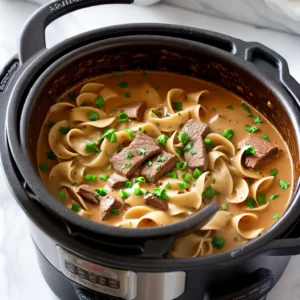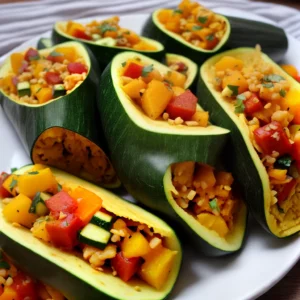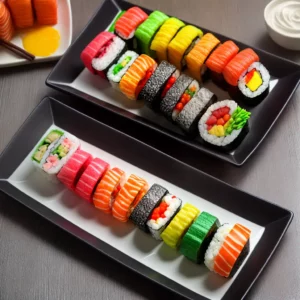Cutting a whole chicken may seem daunting, but with a few simple steps, anyone can master the technique. Not only will this skill simplify your cooking experience, but it will also allow you to maximize the potential of each chicken meal. In this article, I will provide you with step-by-step instructions on how to cut a whole chicken and share some valuable tips and tricks along the way.
Key Takeaways:
- Learn how to cut a whole chicken to customize it for your cooking needs and save money.
- Having the right equipment, such as a sharp chef’s knife and clean cutting board, is essential.
- Follow a step-by-step guide to cut a whole chicken into pieces.
- Practice the skill of cutting a whole chicken to enhance your cooking repertoire.
- Utilize different cuts of chicken for various cooking methods and experiment with flavors.
Why Cut a Whole Chicken Into Pieces?
When it comes to cooking with chicken, cutting a whole chicken into pieces offers numerous advantages. Firstly, it provides flexibility in terms of cooking methods. By separating the chicken into different pieces, you can choose the most suitable cut for your desired dish. For example, chicken breasts are ideal for roasting or grilling, while thighs and drumsticks are perfect for braising or frying. This versatility allows you to experiment with different cooking techniques and flavors, resulting in a more diverse and satisfying culinary experience.
Another benefit of cutting a whole chicken into pieces is the cost-saving aspect. Whole chickens are generally more affordable than precut options. By purchasing a whole chicken and doing the cutting yourself, you not only save money but also have the opportunity to use the leftover parts for making stock or simmering into a flavorful soup. This way, you can make the most out of every part of the chicken and minimize waste.
Additionally, cutting a whole chicken into pieces gives you the freedom to customize the size of each cut according to your preference. Whether you prefer smaller portions or larger pieces, you are in control of how the chicken is divided. This flexibility allows you to cater to individual serving sizes or specific recipes that call for specific cut sizes, ensuring a more precise and enjoyable cooking outcome.
| Advantages of Cutting a Whole Chicken Into Pieces: |
|---|
| – Versatility in cooking methods |
| – Cost-saving compared to precut options |
| – Customizable portion sizes |
By cutting a whole chicken into pieces, you unlock a world of culinary possibilities. From juicy roasted chicken breasts to tender braised thighs, each piece offers its own unique texture and flavor. Don’t limit yourself to pre-cut chicken—embrace the art of cutting a whole chicken and elevate your dishes to new heights.
Now that you understand the benefits of cutting a whole chicken into pieces, it’s time to learn the essential equipment and preparation techniques in the next section.
Equipment and Preparation
Before you begin cutting a whole chicken, it’s important to have the right equipment and take some necessary precautions to ensure safety and cleanliness in your kitchen. Here are some essential tools and steps to prepare:
1. Sharp Chef’s Knife
A sharp chef’s knife is crucial for cutting a whole chicken effectively and efficiently. It allows for clean cuts and minimizes the risk of accidents. Make sure your knife is properly sharpened before starting the process.
2. Cutting Board
Choose a cutting board specifically designated for meat to avoid cross-contamination. It’s best to use a cutting board made of materials that are easy to clean and sanitize, such as plastic or bamboo.
3. Clean Work Area
Before you begin, clean your work area thoroughly. This includes wiping down countertops, sanitizing utensils, and washing your hands to prevent any harmful bacteria from spreading.
4. Proper Handling of Raw Meat
When handling raw chicken, it’s important to follow proper hygiene practices. Avoid touching other surfaces or ingredients while handling the chicken to prevent cross-contamination. Clean any utensils or surfaces that come into contact with the raw meat.

Conclusion
Having the right equipment and preparation is crucial when it comes to cutting a whole chicken. By ensuring your knife is sharp, using a designated cutting board for meat, keeping a clean work area, and practicing proper handling of raw meat, you can make the process safer and more efficient. This will set you up for success as you move forward with cutting a whole chicken into pieces.
How to Cut a Whole Chicken: Step-by-Step Guide
Now that you’re equipped with the necessary knowledge and tools, it’s time to dive into the step-by-step process of cutting a whole chicken. Follow these instructions carefully to ensure you achieve clean and precise cuts:
Step 1: Position the Chicken
Start by placing the whole chicken on a clean cutting board, breast side up. This will be your starting point for separating the different parts of the chicken.
Step 2: Remove the Legs and Wings
Begin by cutting through the skin between the leg and the breast. Use a sharp chef’s knife to make an incision through the joint connecting the leg to the breast. Repeat this step on the other side of the chicken. Once both legs are detached, locate the wing joints and separate them from the body by cutting through the joints. Set the legs and wings aside.
Step 3: Separate the Breast from the Backbone
To separate the breast from the backbone, make a deep cut along one side of the backbone, starting at the tail end and moving towards the neck. Repeat this on the other side of the backbone. You should now have the backbone and the breast halves separated.
Step 4: Divide the Breast into Halves
With the breast halves still skin-side down, locate the center bone that runs between the two halves. Use your knife to make a clean cut, separating the breast halves. Repeat this step with the other breast half.
Step 5: Cut the Legs into Thighs and Drumsticks
Now focus on the leg portion of the chicken. Bend the leg at the knee joint to expose the connecting joint between the thigh and drumstick. Carefully cut through the joint to separate the thigh from the drumstick. Repeat this process on the other leg, resulting in four separate pieces: two thighs and two drumsticks.
Step 6: Optional – Remove the Backbone
If desired, you can remove the backbone completely for use in stocks or soups. Simply make a few cuts along the sides of the backbone and detach it from the chicken.
And just like that, you’ve successfully cut a whole chicken into separate parts! Remember to practice and refine your technique to become an expert at this essential kitchen skill.

Now that you’ve mastered the art of cutting a whole chicken, you have a range of versatile cuts to work with. Each part of the chicken offers unique flavors and textures, making it suitable for various cooking methods.
Whether you choose to roast the chicken breasts, braise the thighs, or grill the drumsticks, the possibilities are endless. Experiment with different cooking techniques, seasonings, and marinades to elevate the taste of each cut.
As you become more comfortable with cutting a whole chicken into pieces, you’ll find that this skill opens up a world of culinary possibilities. So embrace the challenge and let your creativity soar in the kitchen!
Tips for Cutting a Whole Chicken
When it comes to cutting a whole chicken, practice makes perfect. Like any skill, the more you do it, the better you become. Don’t be discouraged if your first few attempts don’t go as smoothly as you’d hoped. With time and practice, you’ll develop the dexterity and precision needed to efficiently and effectively break down a whole chicken into various pieces.
A useful tip is to start with a fresh or partially frozen chicken. A slightly chilled chicken is easier to handle and reduces the risk of the meat tearing or breaking apart. If you’re not planning to use all the chicken at once, consider cutting it into pieces and storing them in the freezer. This way, you’ll have conveniently portioned pieces of chicken ready to use whenever you need them.
Another tip is to make use of the entire chicken, even the parts that may not typically be used in a specific recipe. For example, save the back and bones to make a flavorful stock or simmer them into a delicious chicken soup. With a sharp chef’s knife and some practice, you can easily separate the different cuts of meat and use each part to its fullest potential.

Table: Common Cuts of Chicken
| Cut | Description | Best Cooking Method |
|---|---|---|
| Chicken Breast | Lean and tender meat | Roasting, grilling, sautéing |
| Chicken Thigh | Juicy and flavorful | Braising, frying, baking |
| Chicken Drumstick | Dark meat with a bone | Baking, grilling, frying |
| Chicken Wing | Small, versatile, and flavorful | Grilling, frying, baking, sautéing |
Remember, a sharp chef’s knife is your best tool when it comes to cutting a whole chicken. Take the time to familiarize yourself with the different cuts and practice your knife skills. With patience and persistence, you’ll soon become a pro at handling and cutting a whole chicken like an expert chef. Enjoy the satisfaction of knowing that you’re maximizing your ingredients, saving money, and creating delicious meals with your own two hands.
How to Use Different Cuts of Chicken
When it comes to cooking chicken, knowing how to use different cuts can greatly enhance the flavor and texture of your dishes. Each part of the chicken lends itself to specific cooking methods, allowing you to create a variety of delicious meals.
To get started, let’s take a look at the different cooking methods and which cuts of chicken are best suited for each:
- Roasting: Chicken breasts are perfect for roasting as they cook quickly and evenly, resulting in tender and juicy meat.
- Grilling: Chicken breasts, thighs, and drumsticks are all great options for grilling. The high heat of the grill gives the chicken a delicious smoky flavor.
- Boiling: Chicken wings and drumsticks are often used in soups and stews that require a longer cooking time. Boiling these cuts helps to break down the collagen in the meat, resulting in tender and flavorful chicken.
- Baking: Chicken thighs and legs are perfect for baking. The longer cooking time allows the meat to become tender and juicy, while the skin becomes crispy and golden.
- Sautéing: Chicken breasts and thighs are ideal for sautéing. The high heat and quick cooking method result in a beautiful sear on the outside while keeping the meat moist and flavorful.
- Marinating: All cuts of chicken can benefit from marinating. Marinating not only adds flavor but also helps to tenderize the meat, making it more succulent and tasty.
- Seasoning: No matter which cooking method you choose, seasoning is always key. Whether you prefer a simple salt and pepper seasoning or a more complex blend of herbs and spices, don’t be afraid to experiment and enhance the flavor of your chicken.
By understanding the best cooking methods for each cut of chicken, you can take your culinary skills to the next level and create mouthwatering dishes that will impress your family and friends. So, grab your apron, sharpen your knives, and get ready to enjoy the deliciousness of different cuts of chicken.

Tips for Presenting and Serving Chicken Pieces
When it comes to presenting and serving chicken pieces, there are a few tips and tricks that can elevate your dish from ordinary to extraordinary. Aesthetics and flavors play an important role in creating a memorable meal, and with a little attention to detail, you can impress your family and friends with your culinary skills.
Plating the Chicken
The presentation of your chicken pieces can make a significant impact on how they are perceived. Rather than simply piling the pieces on a plate, take the time to arrange them in an appealing manner. Start with a clean plate and carefully place each piece, considering color, shape, and size. You can create a beautiful composition by layering the pieces or arranging them in a circular pattern. Don’t be afraid to get creative and experiment with different plating techniques.
Seasoning and Garnishing
Seasoning is key to bringing out the flavors of your chicken pieces. Before cooking, be sure to season them generously with salt, pepper, and any other desired herbs or spices. This will infuse the meat with flavor and enhance the overall taste of the dish. Additionally, consider garnishing your chicken pieces with fresh herbs or spices to add visual appeal. Sprinkle some chopped parsley, cilantro, or thyme over the top of the chicken to give it a pop of color and freshness.
Pairing with Complementary Side Dishes
When serving chicken pieces, it’s important to think about the side dishes that will accompany them. Choose sides that complement the flavors of the chicken and provide balance to the meal. For example, if you’re serving roasted chicken pieces, consider pairing them with roasted vegetables or a light salad. If you’re serving fried chicken, opt for classic sides like mashed potatoes and coleslaw. The combination of the chicken pieces and the side dishes should create a harmonious and satisfying dining experience.
In Summary
Presentation and serving are crucial aspects of any meal, and chicken pieces are no exception. By taking the time to plate your chicken pieces thoughtfully, season them well, and pair them with complementary side dishes, you can create a dining experience that is both visually appealing and delicious. Remember to let your creativity shine and have fun experimenting with different flavors, herbs, and spices to make each dish unique. Bon appétit!
Resources for Further Learning
Are you ready to take your chicken-cutting skills to the next level? Whether you’re a beginner looking for step-by-step instructions or an advanced cook looking to refine your technique, there are plenty of resources available to help you master the art of cutting a whole chicken.
Step-by-step tutorial: Visual learners will find video tutorials particularly helpful. These tutorials provide detailed demonstrations of the entire process, from start to finish. You’ll be able to follow along with the instructor and see exactly how each cut should be made. Look for tutorials that include close-up shots and clear explanations to ensure you don’t miss any important details.
Instructional videos: There are many instructional videos available online that cover various aspects of chicken cutting. These videos often provide additional tips and tricks that you may not find in written instructions. Whether you prefer YouTube or other video platforms, you’re sure to find a tutorial that suits your learning style.
Beginners and advanced: No matter your skill level, there are resources available for you. Beginners can start with basic tutorials that cover the essential cuts of a whole chicken. These tutorials will walk you through the process step-by-step, making it easy to follow along. Advanced cooks can seek out more specialized tutorials that delve into advanced techniques, such as deboning or butterflying. These tutorials will challenge your skills and help you elevate your chicken cutting game.
| Resource | Description |
|---|---|
| Online tutorials | Step-by-step written instructions with accompanying images. Ideal for those who prefer to read and follow along. |
| Video demonstrations | Visual demonstrations with detailed explanations. Perfect for visual learners who prefer to see the process in action. |
| Cooking classes | In-person or online classes taught by professional chefs. These classes offer hands-on experience and personalized guidance. |
Whichever resource you choose, remember that cutting a whole chicken is a skill that improves with practice. Don’t be discouraged if your first attempts aren’t perfect. With time and dedication, you’ll become a pro at cutting a whole chicken and open up a world of culinary possibilities.

Conclusion
In conclusion, learning how to cut a whole chicken is an essential skill for any home cook. By mastering this technique, you can enhance your cooking experience and unlock a world of culinary possibilities. Cutting a whole chicken allows you to customize the chicken to suit your preferred cooking methods, whether it’s roasting, grilling, braising, or frying.
Throughout this article, I have provided you with a step-by-step guide on how to cut a whole chicken, as well as valuable tips and tricks to ensure success in the kitchen. Remember to have the right equipment, such as a sharp chef’s knife and a separate cutting board for meat, to facilitate the process and maintain hygiene.
By familiarizing yourself with the different cuts of chicken and their characteristics, you can explore various cooking techniques and experiment with different flavors and seasonings. Presenting and serving chicken pieces with attention to aesthetics and flavor will elevate your culinary creations and impress your guests.
So, why not embrace the art of cutting a whole chicken and take your poultry recipes to the next level? With practice and a willingness to explore new recipes and techniques, you’ll become an expert chef in no time. Happy cooking!
FAQ
Is cutting a whole chicken difficult?
Cutting a whole chicken may seem daunting, but with a few simple steps, anyone can master the technique.
Why should I cut a whole chicken into pieces?
Cutting a whole chicken into pieces allows for versatility in recipes and maximizes the potential of each chicken meal.
What equipment do I need to cut a whole chicken?
You will need a sharp chef’s knife and a separate cutting board for meat to prevent cross-contamination.
How do I cut a whole chicken?
Follow our step-by-step guide to learn how to cut a whole chicken into pieces.
Any tips for cutting a whole chicken?
Practice makes perfect! You can also freeze the chicken backbones for making stock or simmer them for soup. And always use a sharp chef’s knife.
How should I use different cuts of chicken?
Each chicken part has its own characteristics and is best suited for specific cooking methods. Get creative with your cooking methods and experiment with different flavors and seasonings.
Any tips for presenting and serving chicken pieces?
Arrange the chicken pieces on a platter in an appealing manner and garnish with fresh herbs or spices. Don’t forget to season or marinate the chicken pieces before cooking.
Are there resources for further learning?
Yes, there are plenty of step-by-step tutorials and videos available online for beginners and those looking to refine their technique.
What’s the benefit of learning how to cut a whole chicken?
Cutting a whole chicken is a valuable skill that simplifies the cooking experience and allows for customization in recipes.
Source Links
- https://littlesunnykitchen.com/how-to-cut-a-whole-chicken/
- https://www.marthastewart.com/920455/how-cut-chicken
- https://www.bhg.com/recipes/how-to/handling-meat/cutting-up-a-whole-chicken/
Related Recipes:
 How to Cut Up a Chicken Breast for Recipes
How to Cut Up a Chicken Breast for Recipes
 How to Cut Up a Chicken Breast for Recipes
How to Cut Up a Chicken Breast for Recipes
 How to Cut a Whole Chicken: Tips and Tricks
How to Cut a Whole Chicken: Tips and Tricks
 How to Cut a Tomato: Techniques for Every Dish
How to Cut a Tomato: Techniques for Every Dish
 How to Cut a Tomato? (Perfect Step-By-Step Guide)
How to Cut a Tomato? (Perfect Step-By-Step Guide)
 How to Cut Up a Chicken Wing: Tips and Techniques
How to Cut Up a Chicken Wing: Tips and Techniques
 How to Cut Broccoli: A Quick Guide
How to Cut Broccoli: A Quick Guide
 How to Cut Green Onions? (Step-By-Step Guide)
How to Cut Green Onions? (Step-By-Step Guide)








